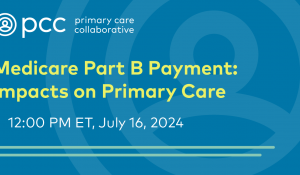The Patient Preferences Passport is a user-friendly tool patients can use to take ownership of their care. Additionally, the guide outlines how to effectively implement the tool in practice settings.
Medication Management
The Centers for Medicare & Medicaid Services (CMS) identified six key focus areas to measure effective patient and family engagement in clinical practice. The intent of this metric is to ensure that all patients and/or their family are being supported to safely manage their medications, and that there is a systematic, standard method in place to evaluate and support patients and their caregivers in medication self-management.
Related Resources
October 2019
Patient and family engagement strategies in 10 minutes or less. Six learning modules serve as a "starter track" for primary care practice transformation.
Get Started Here! PCPCC Bite Size Learning Modules
October 2019
The National Resource Center for Patient/Family-Centered Medical Home Is a national technical assistance center focused strengthening the system of services for children and youth with special health care needs and their families by enhancing the patient/family-centered medical home.
American Academy of Pediatrics
October 2015
This comprehensive document contains programs, practices and research to support the integration of patient and family engagement, and specific strategies for Patient and Family Advisory Councils.
National Academy of Medicine Patient & Family Council Leadership Network
October 2017
Tool for patients to effectively record discussions, decisions made and follow up items from an appointment.
AHRQ
October 2017
The Be Prepared To Be Engaged toolkit will help patients and their families prepare for and become more fully engaged in their medical appointments—to be ready for the appointment, to speak up, to ask questions, to take notes. Tools are also available for clinicians and practice staff to...
AHRQ
October 2018
This guide outlines how practices can involve patient and family advisors in the Choosing Wisely implementation, which helps patients ask questions and make informed decisions.
Choosing Wisely, IPFCC, PCPCC
October 2019
These downloadable resources can be used by clinicians to educate patients about Choosing Wisely, which helps patients ask questions and make informed decisions. Several of these items can be placed in waiting or exam rooms or given to patients as handouts.
Choosing Wisely, ABIM Foundation
October 2017
This webinar provides an overview of the Warm Handoff Strategy and how to implement it within primary care clinic settings.
AHRQ
October 2017
The Quick Start Guide provides clinicians and practice staff with five simple steps for implementing the warm handoff strategy in the office setting, and resources to encourage patient participation.
AHRQ
October 2019
The go-to resource for latest updates and background information on the Quality Payment Program (QPP) from the Centers for Medicare and Medicaid Services (CMS).
CMS
September 2019
Patient portals are becoming more prevalent, as healthcare providers, payers, and patients become more comfortable with their use. A 2017 survey found that 82% of patients reported having logged into their provider’s patient portal at least once – a drastic change from a similar 2013...
Patient Portals: How can they impact primary care?
April 2018
This document outlines how the Choosing Wisely program can help practices achieve TCPI program aims, which align with the Quality Payment Program.
Maine Quality Counts, PCPCC
April 2018
This comprehensive guide provides primary care practices with four strategies that they can adopt to improve patient safety and engagement.
AHRQ
March 2018
The Mayo Clinic Shared Decision Making National Resource Center provides decision aids and decision-making techniques. Tools are available for specific conditions and in English and Spanish.
Mayo Clinic
March 2018
This learning module reviews common causes of medication nonadherence and how your practice can establish a standrd process to address them. 0.5 CME credits from the AMA are available upon completion.
American Medical Association, AMA Steps Forward
March 2018
The Quick Start Guide provides clinicians and practice staff with five simple steps to implement a medication management strategy in the office setting.
AHRQ
November 2016
In November 2016, PCPCC offered a special one-day training for patient advisors, family caregivers and their clinician partners. This page contains presentation slides from the sessions, and highlight tools and strategies for implementing patient and family engagement strategies.
PCPCC
March 2016
This change packet was originally created as a guide for practices participating in the Transforming Clinical Practies Initiative. It outlines tangible steps to meet TCPI goals, which align with Quality Payment Program standards.
CMS
Secondary menu
Copyright © 2024 Primary Care Collaborative











